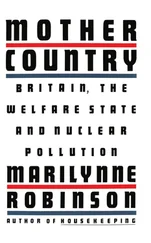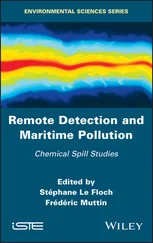Many methods have been suggested for dealing with sewage. Ideally it should be returned to the land as fertiliser; if all the salts which we pour down the drains and, eventually, into the sea could be recovered, they would replace the greater part of our imports of chemical fertilisers and might replace them in a more desirable form. Various methods of composting sewage have been devised, and successfully adopted in a few places. In China agriculture in many areas depends on the use of human excreta as manure. The main difficulty is that unless carefully done, the composting process may not kill parasitic worms and other pathogenic organisms, and the compost may be a danger to health. Nevertheless I think that eventually these problems may be solved to the benefit of our rivers and our agriculture.
At one time “sewage farms” were commonly developed. The raw effluent was run into channels and allowed to percolate into the ground. Excellent vegetables were grown on ridges between the channels. Where large areas of well drained soil were available, with no rapid percolation into the water supplies, this was a reasonably safe method, and the material was broken down by the soil bacteria in a fairly short time. An optimum addition of sewage gave maximum fertility and no serious pollution, though parasitic worms and pathogenic bacteria often fouled the vegetables which therefore needed careful cooking. However, there is an upper limit to the amount of material which can be treated in any area as over-treatment overwhelms the bacterial fauna and disgusting conditions result. As suitable ground is becoming less easily available, this method has been largely abandoned.
To-day most urban waste is dealt with before being discharged into rivers, though quite a lot of raw sewage is still run directly into the sea and into tidal estuaries. This latter procedure has in recent years been the subject of much justifiable criticism, as it has been a cause of severe health hazards as well as aesthetic unpleasantness; nevertheless it has probably contributed to the richness of the flora and fauna on the shore near to several popular seaside resorts. The usual methods of sewage treatment depend essentially on oxidation by aerobic organisms. The most widely used system includes filtration through trickling filters, which are the circular structures seen in most sewage works. They are made of clinker or broken stones, and the fluid trickles slowly through them, leaving the interstices full of air. It takes some months for a filter bed to reach its maximum efficiency. It becomes covered with many different micro-organisms which feed on, and so remove, most of the organic matter. The filter is prevented from quickly becoming clogged by their growth because insect larvae and worms also develop in large numbers and feed on the micro-organisms. Another system of sewage treatment is the active sludge process. In this the sewage is run into tanks. These are inoculated with the sludge from a previous batch (to make sure the correct micro-organisms are present) and the whole is kept stirred to ensure aeration. The organic matter is broken down as in the filters. A clear effluent, and “sewage sludge” which is dried and may be sold as a fertiliser, is produced.
These methods of sewage treatment, supplemented by filtration through sand in some cases, are remarkably successful. The greater part of the flow of some of our rivers is in fact treated sewage effluent. It is sometimes said that the water of the Thames when it reaches London has been drunk and passed through different sewage works at least five times. The result is, from the point of view of man, very much an improvement on the conditions which obtained a hundred years ago. There are, however, disadvantages in treated sewage effluent as compared with moderate doses of raw sewage from the point of view of some forms of life. Raw sewage is oxidised rapidly, but its breakdown products become gradually available over a period of several days or even longer. In even the most slowly moving river this means that they are diluted and spread over a considerable area. In treated effluent many salts, not themselves poisonous, are present, and are immediately available as sources of nutrition for plants including algae. Thus a “clean” sewage effluent can have a more rapid, and in some ways more undesirable, effect on the vegetation than the same amount of untreated sewage. This emphasises the conflict that may arise between the needs of human hygiene and the preservation of natural conditions in streams.
Severe organic pollution with complete deoxygenation of the water is an obvious and undesirable condition. Life is not completely absent. Many bacteria, some producing poisonous or unpleasant gases like hydrogen sulphide, abound. Some of the insects which actually breathe air at the water surface, such as the rat-tailed maggot Eristalis , are quite common, but insects which remain totally submerged and all fish are absent. This condition obtains in much of the Thames estuary, notwithstanding the marked improvement that has taken place in recent years.
In many rivers and streams, organic pollution is intermittent. At times it is severe, and complete or almost complete deoxygenation occurs. At other times the water is comparatively pure and oxygen is present. Such severe pollution will kill all the fish, many of the plants and most of the insects and other invertebrates. Recolonisation when it ceases occurs, but which animals and plants reappear depends on many factors. After severe pollution of a stretch of a river, the remainder of which is unaffected, recolonisation is rapid. Careful sampling has shown that some species of “coarse” fish come back even when the oxygen tension is still quite low. Fish have the obvious advantage of being quick moving and able to progress against all but the fastest currents. Many species of invertebrates cannot move so fast, and plants are dependent on water and air currents, animals and other factors for their distribution. Ecologists can quickly recognise a river which is recovering from a period of pollution.
The usual effect of organic pollution is partial, rather than complete, deoxygenation. This is a very complicated subject and for details readers should refer to the books already mentioned by Hynes and Erichsen Jones, and to the excellent work which is constantly coming from the Water Pollution Research Laboratory. It is important to remember that unless organic pollution is very severe, most bodies of water exhibit self-purification to a greater or lesser extent. Fig. 4 shows the changes in a river below an organic effluent outfall. This illustrates a case of severe pollution, but insufficient to cause complete deoxygenation. A shows how the oxygen level drops and the B.O.D. rises just below the outfall; farther down this process is reversed until the oxygen level is fully restored. B shows the parallel changes in the chemical constitution of the water. C and D show how the micro-organisms and the larger animals fare. The recovery of the “clean water fauna” will depend on recolonisation, if, as appears in this figure, it is totally eliminated just below the outfall. In some cases the purified river will still be richer in nutrients than above the point where the effluent entered, and the level of the clean water fauna may be actually enhanced. This indicates how moderate pollution, from a small village, for instance, may have little permanent harmful effect. With the growing population of Britain, however, it seems that other methods of disposal than the rivers will always have to be used if the water is to be kept safe for wild life; if it is only to be drunk by man such high standards are not required!
So far we have mainly considered pollution due to organic waste, and consisting of substances which in themselves, and in small quantities, are harmless or even beneficial to life. Many effluents particularly from industry contain toxic substances. Some of these, including phenols and thiocyanates, are usually broken down by bacteria, particularly if they are mixed and diluted with ordinary sewage which, of course, promotes rich bacterial growth. Many, but by no means all, toxic organic substances are affected in this way, but metallic poisons generally pass through filter beds without loss of toxicity. Some metals are remarkably toxic to certain forms of life. Thus copper is used to keep ponds free from algae, when 0·5 parts per million is often effective. Fish survive just over 1 p.p.m., and 2 p.p.m. is tolerated in human drinking water. Zinc affects certain invertebrates at widely different concentrations, some snails are killed by 0·3 p.p.m., some insects survive 500 p.p.m. Much more work is necessary on the long-term effects of metals at low concentrations, not only on fishes and invertebrates, but on man. Recent findings on the effects of low doses of lead on man are disquieting and more harm may be being done to other forms of life than is usually recognised.
Читать дальше












